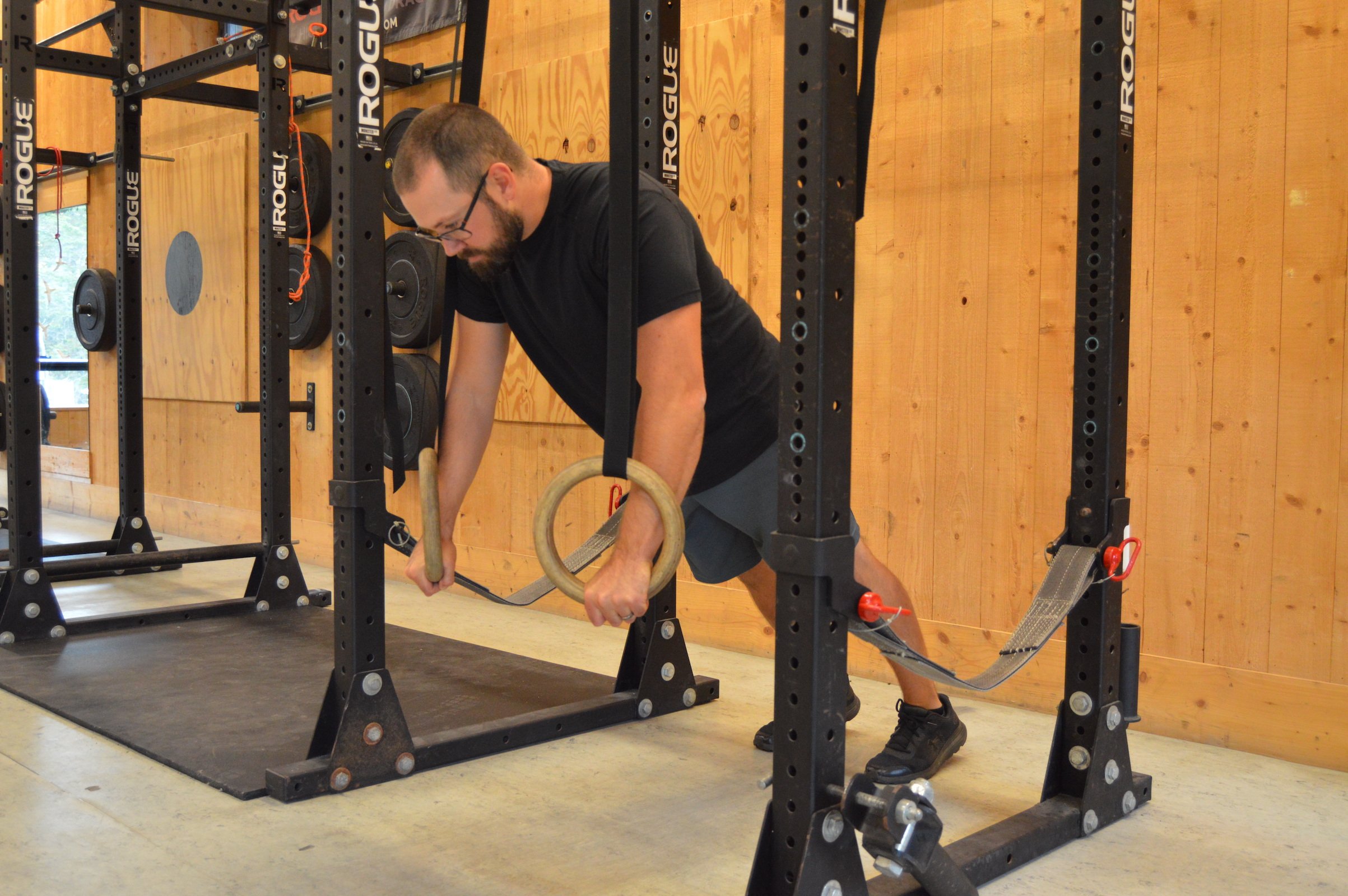Move of the Month: Core Exercises with TRX or Gymnastics Rings
by GRP strength coach Will Ruth
Commonly referred to together as “suspension trainers,” a TRX or gymnastics ring setup is one of my top recommended equipment items for those strength training from a home gym or with the ability to request equipment for a gym or weight-room. You can do all sorts of exercises with suspension trainers. One of the best uses is for core exercises.
I find that stable, static or short range-of-motion, ground-based core exercises offer limited challenge and utility for many athletes, especially those who do their sport on unstable surfaces of snow and water! Long plank holds and sets of crunch variations don’t simulate the demands of our complex endurance sports with their lower stability, higher tension, longer range-of-motion (ROM) involving movement at the hips or shoulders.
Whether you’re rowing, skiing, or running, we typically want a stable spine with mobile hips and shoulders. Planks (stable hip and stable spine) and crunches (mobile hip and mobile spine) can be fine for “working out the abs,” but both miss elements of core muscle strength and coordination to transfer to sport performance. The suspension trainer offers numerous exercises to integrate shoulder and hip movement and offer longer ROM exercises with greater stability demands.
Watch my demonstration video for a progression of suspension trainer core exercises using gymnastics rings. Begin with just the hands-in-rings plank and the key technique cues below. As the athlete develops strength and the ability to stabilize the torso with shoulder instability, progress to one-arm walking, alternating walking, 1-arm stir-the-pot, 1-ring fallout, 2-ring fallout, and 2-ring stir-the-pot. As I demonstrate, you can also do variations of these exercises with a physioball if you don’t have a suspension trainer.
Key technique pointers:
Train with a stable spine: terminate the set if spine movement creeps into the exercise via flexion (rounding) or extension (arching). There should be very little movement at the low back, moving smoothly through the hips and shoulders.
Breathe deeply into the low abdominals: don’t hold the breath or breathe shallowly with the chest and shoulders. Many athletes hold their breath to create torso stability, which is bad for our intense aerobic sports! We want torso stability AND the ability to breathe deeply or at least normally under strain.
Keep shoulders down and connected to the torso: terminate the set if the shoulders begin shrugging up, indicating shifting the load to the upper trapezius muscles. This is a common error in sport technique, so we don’t want to replicate it in the gym too.
Any athlete of any level can do these exercises by starting at the beginning of the progression and using appropriately challenging variations. Most suspension trainers have adjustable strap lengths or handle heights. The higher the handle height, the easier the exercise. Begin around waist-height and then adjust from there. This offers three ways to progress in overall challenge of exercise: handle height, exercise variation, and time.
I typically program suspension trainer core exercises in sets for time. The simplest form of progression is to keep the same handle height and the same variation and gradually add to the time under tension like so:
Week 1: 3 sets of 15 seconds
Week 2: 4 sets of 12 seconds
Week 3: 3 sets of 20 seconds
Week 4: 4 sets of 15 seconds
Week 5: 15 seconds, then 20 seconds, then 30 seconds
Week 6: 4 sets of 20 seconds
Week 7: 3 sets of 30 seconds
I find more value in increasing exercise challenge via height or variation after 30-45 seconds of holding, rather than continuing to add time. Once you can hold for 30-45 seconds with good technique, decrease handle height or try another variation to keep the exercise challenging.

